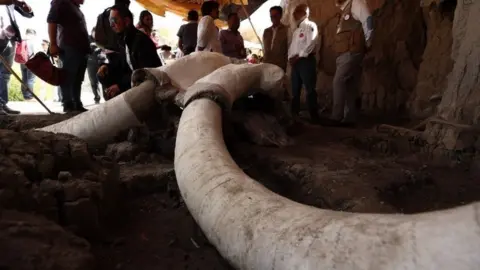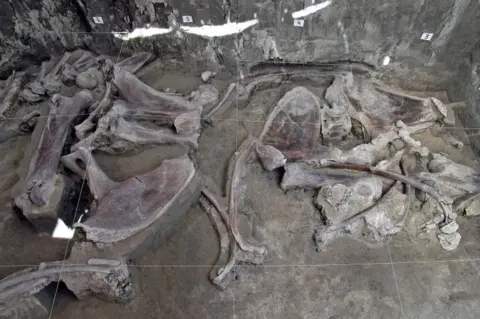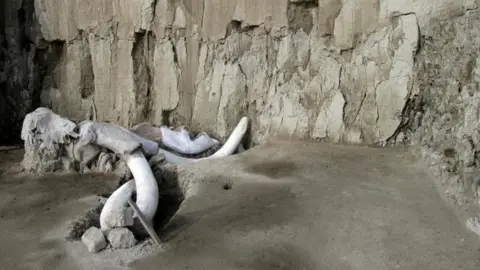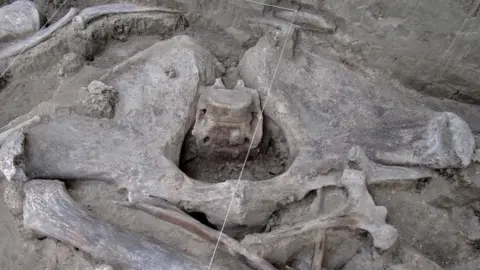Mexico mammoths: Human-built woolly mammoth traps found in Tultepec
 EPA
EPAAt least 14 woolly mammoth skeletons have been uncovered in Mexico in traps built by humans about 15,000 years ago.
The two pits in Tultepec north of Mexico City are the first mammoth traps to be discovered, officials say.
Early hunters may have herded the elephant-sized mammals into the traps using torches and branches.
The recent discovery of more than 800 mammoth bones could change our understanding of how early humans hunted the enormous animals.
Mexico's National Institute of Anthropology and History (INAH) says more traps could be uncovered in the area north of Mexico City.
Archaeologists thought early humans only killed mammoths if the animals were trapped or hurt.
However, INAH's discovery of the human-built traps could mean such hunts were planned.
Diego Prieto Hernández, director of the institute, said the discovery "represents a watershed, a turning point in what we until now imagined to be the interaction between hunter-gatherers with these huge herbivores".
The two pits are about 1.7m (5ft 6in) deep and 25m in diameter. Excavations at the site have been taking place for 10 months.
 AFP / INAH
AFP / INAH AFP / INAH
AFP / INAH AFP / INAH
AFP / INAH EPA
EPA
